Camellia Growing Guide
September 11th, 2020 | Categories
Camellia is a genus of flower native to eastern and southern Asia, where they hold a prominent place in the cultures of those countries. A glossy evergreen shrub which displays a unique and colourful foliage, in their home regions, camellias are actually a crop of some economic importance. Known as the “tea flower” in China, for example, they are in fact used across Asia to make tea. They are also used to make tea seed oil and have various applications in cooking and cosmetics. In Japan, for example, their seed oil is much valued for use in hair care products.
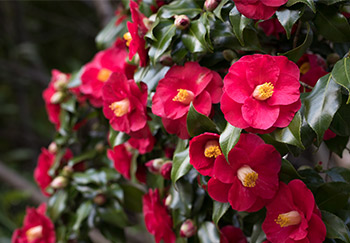
Yet although a particularly useful plant, they are of course most prized for their unique ornamental value. Further west – where these exotic “Japanese Roses” were first introduced in the 18th century – they exist much more to be looked at. And with very good reason! Coming in shades of white, pink and red, they are a delightful addition to many types of gardens and are particularly suited to containers. Camellias also flower early in the season, offering the chance to brighten up the garden at a time when pretty much nothing else is in bloom!
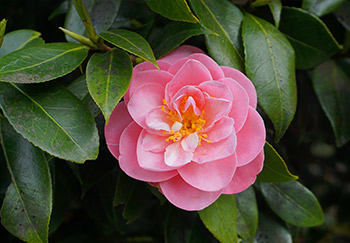
There are loads of different cultivars for camellia and within the range of this one genus there is an impressive amount of variety. Camellias can range considerably in size and flower form, with many varieties of single and double petaled forms. But whatever you go for, camellias are perfect for bringing a little late winter colour and blooms throughout the season.
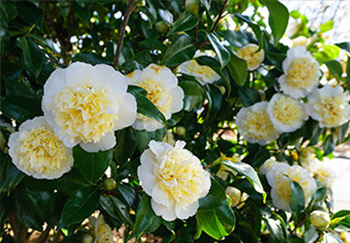
How to Grow
Preparation
As these remarkable flowers will be showing their first blooms when winter is only just on the way out, you’ll want to get them planted in the late autumn. This will allow the roots to set in before the soil becomes hard and cold. That as may be, these early-blooming flowers are actually not too keen on sun and will be best placed in full or partial shade. Although generally hardy, they’ll also fair best away from any strong or chill winds so try to afford them a little shelter, especially in cases of particularly severe frost. Camellias are particularly suited to containers, so it shouldn’t be too difficult to get them going in the right spot!
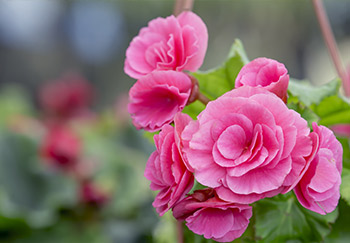
In terms of soil, hardy Camellias will fair pretty well in most soils. But if you’re interested in truly optimising conditions for your Camellias – or if you’re wondering what to fill your containers with – go with a slightly acidic soil and, of course, you can dig in some compost or other organic material to really help things along. Although unlikely to be the case, do keep an eye out for waterlogged or excessively alkaline soil, as this can have an adverse effect. As is good general practice, remove any weeds from your planting area and loosen up the soil a bit beforehand.
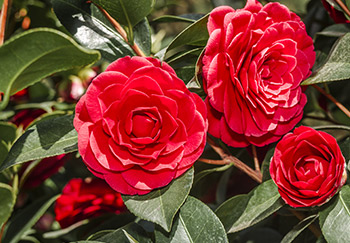
Planting
As camellias will ultimately grow into medium to large plants, you’ll want to leave sufficient space between your planting spots. Around ten to fifteen feet (3-5m) should do the trick. To plant, have a look at the size of your root ball and dig a hole that is twice as wide and just as deep. Then you can refill the bottom two to three inches (5-7 cm) with soil, this time packing it in tightly.
Camellias love a relative shallow depth so your rootball should ultimately lie a little above the level of the soil. Afterwards, you can fill in around the rootball, sloping the soil up the sides of the above ground rootball. Then, as is another example of good general garden practice, a nice layer of mulch (around 1”/2.5cm) over the top of the rootball will really help it grow!
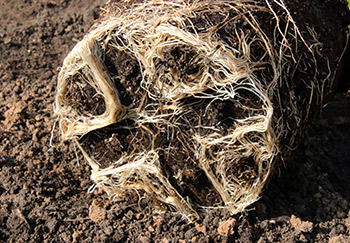

Ongoing Care
When it comes to watering your camellias, there’s a handy a trick that can be employed to tell if they need a moisture top up. What you should do is check the soil at a depth of 4 inches (10cm) and, if it’s dry at this level, it’s time to water. You’ll normally find it’s a good idea to have a regular watering schedule throughout the winter and then as needed thereafter.
Beyond some initial compost and mulch when planted, camellias can be fed as they grow with an ericaceous fertiliser. Bear in mind however that excessive late-summer feeding can lead to bud drop. All you need to keep in mind, however, is not to feed them later than July.
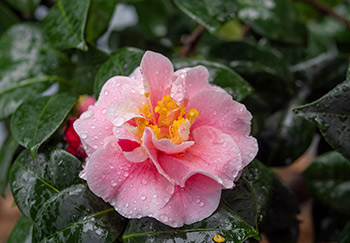

Camellias are actually one type of flower for which deadheading will not actually significantly improve flowering in years to come, so you can be free and easy when it comes to this task. Removing faded blooms can be a good way to keep your camellia looking fresh right through the season, but there’s no urgency here.
The time to prune is after blooming has ended. Although bear in mind this will not always be necessary. It’s a great idea to remove dead or weak wood in order to give future blooms the space to grow. Camellias have a habit of spreading outwards; this might be exactly what you are after but if you’d like to encourage more upright growth, simply shorten the lower branches after blooming has finished.

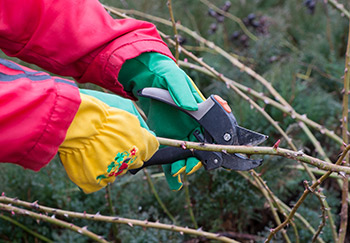
Camellias in Your Garden
For all their impressive array of practical applications, camellias are primarily grown for their ornamental beauty. With a real multiplicity of distinct cultivars, it’s almost certain that you can find a camellia to suit your garden. The variation in size across the many camellia cultivars is a real advantage, meaning you can incorporate camellias into almost any garden or container display, whether they are neat and compact or spreading sideways.
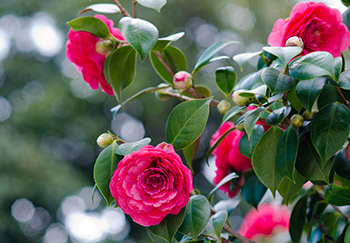
The soft-toned colours of camellias have meant that they have traditionally been incorporated into woodland displays, often complimenting rhododendrons, fellow flowers which don’t particularly like an alkaline soil.

Camellias are probably most prized, however, for their often large and flamboyant blooms, which are set perfectly against their deep green foliage. Camellias are ultimately versatile and, especially when grown in containers, can be incorporated into all sorts of displays. It’s up to you!

Useful Links
- Dianthus Growing Guide (Article)
- Osteospermum (African Daisy) Growing Guide (Article)
- Geranium Growing Guide (Article)
- Fuchsia Growing Guide (Article)
- Shop online for Plants






